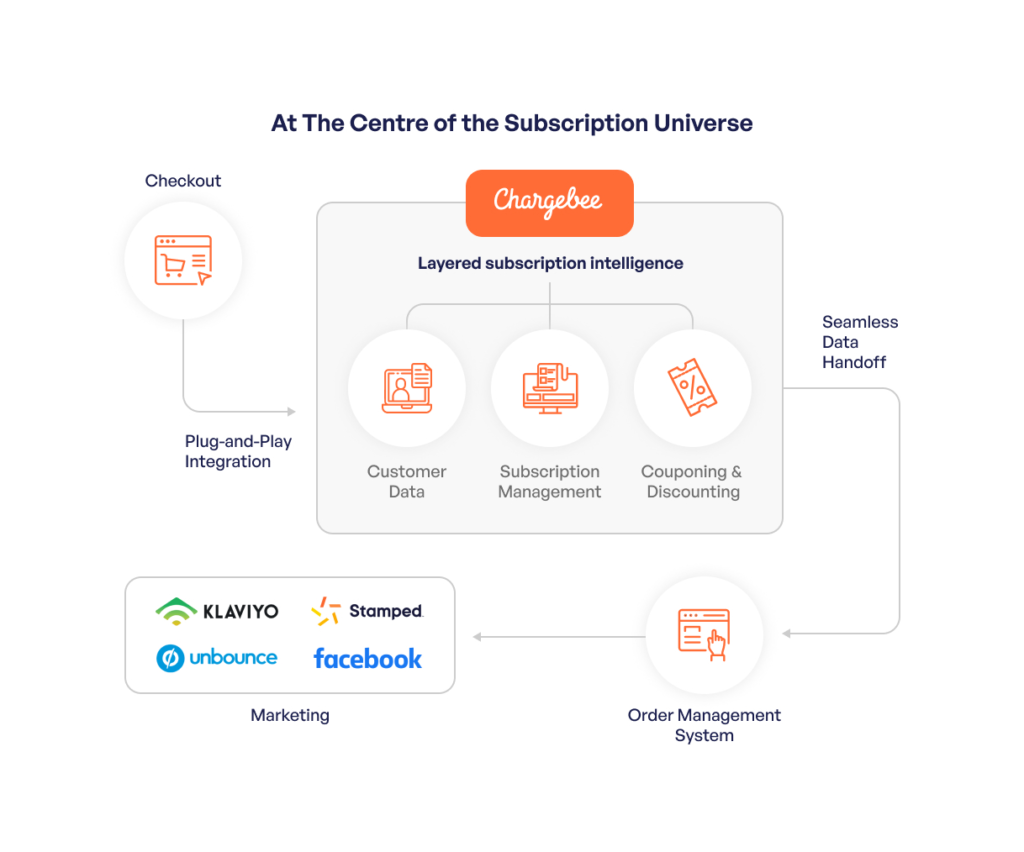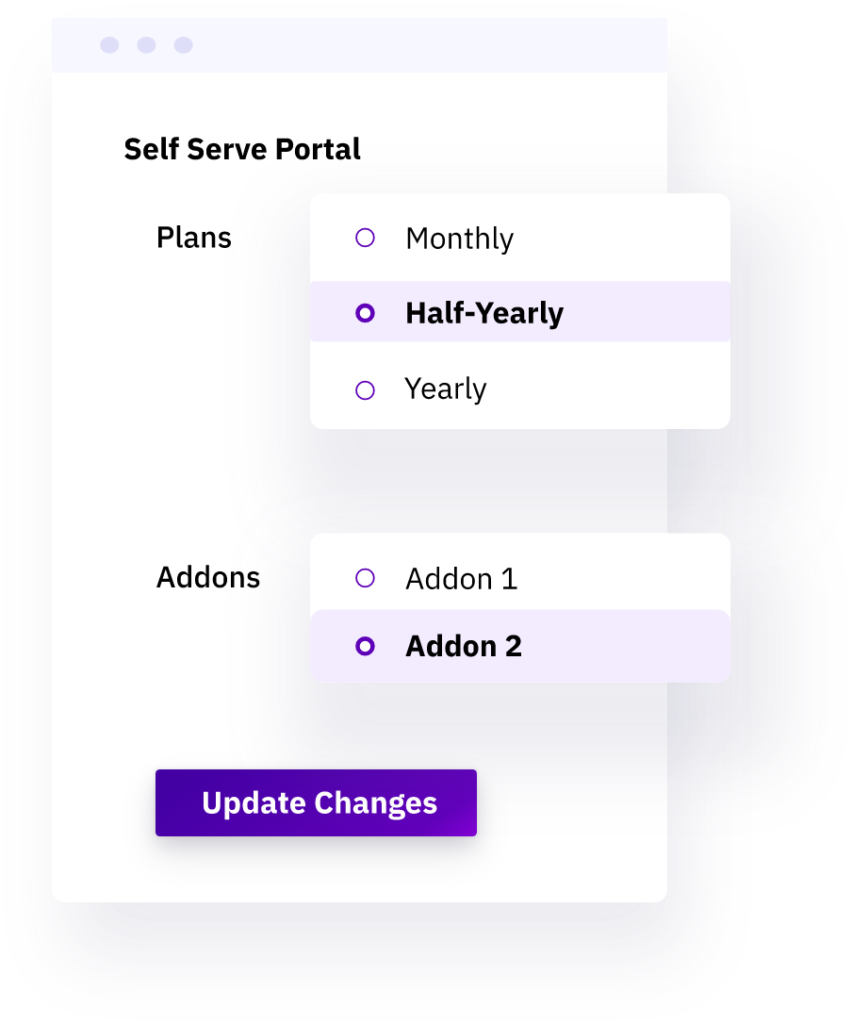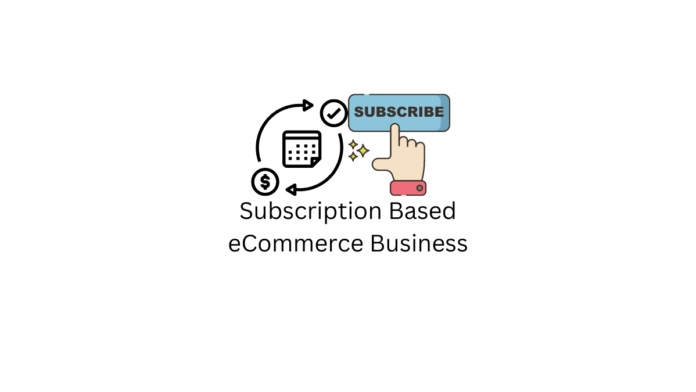Last updated - April 13, 2023
From its humble (read simple) beginnings in 17th-century newspapers and publishing houses, the subscription business has only grown in relevance as many industries continue experimenting and jumping on the bandwagon. When the pandemic pushed retail businesses online, subscriptions rolled over with them. Today, subscription eCommerce has ballooned into a $196.35 billion market.
The benefits are obvious – customers automate periodic purchases and make a long-term (compared to one-time purchases) commitment to a brand. For them, this reduces the hassle of repurchasing. For businesses,
it reduces the need to onboard the same customers multiple times and develop a long-standing relationship with them. A sticky customer base not keeps competitors at bay but helps in consistently their lifetime value from the opportunity for competitors to bite into their customer pool. Additionally, recurring revenue from subscriptions is far more predictable and less prone to seasonal volatility than ad-hoc purchases.
It is one thing to be enamored by the advantages subscription commerce offers your business and something completely different, setting one up from scratch.
Setting up a subscription business involves significant deliberation on what products are conducive for recurring purchases and experimenting with different plans/pricing options to find early product-market fit. You also have to set up your workflows to automate subscription purchases and allow your customers to pause, upgrade or downgrade their subscriptions as and when they please.
If you are planning to power your eCommerce business with recurring revenue, here are some key ingredients to help you find success –
Choose the Right Subscription Model for Your Business
While multiple permutations and combinations are possible when you set up a new pricing model for your business, you can categorize subscription eCommerce under the following three variants –


Access-based Subscriptions: Driving Value Through Exclusivity
Access-based subscriptions work well if you sell an exclusive product/service/experience or one consumed ad-hoc at a significant markup. The driving value for access-based subscriptions is that customers will – in all likelihood – not find the same product/experience elsewhere, at least not at a price point conducive to their budgets.
Since customers typically pay for a ‘membership’ to your products over a predefined period, the differentiator is the availability of perks inaccessible to non-members.
Access-based subscription eCommerce businesses use their ‘product’ as the primary lever of differentiation. In this case, either the product is substantially better or is significantly different from what the current market provides. Hence, product innovation defines success for this model.
For example, America’s best-selling collagen brand – Vital Proteins – is an access-based subscription eCommerce business that provides a highly differentiated product to stand out in a highly competitive health and wellness industry.
The Curation-box Model: Driving Value Through Discovery
In 2010, the launch of Birchbox – a curation-based beauty assortment subscription created ripples through the market and truly put subscription eCommerce on the public radar, invoking the investor community’s interest.
Curation boxes keep customers engaged by allowing them direct access to various items. Their value proposition is the continually changing set of items the customer receives each time. For example, TokyoTreat – provides every customer a ‘taste of Japan’ with changing, seasonal snack assortments every month.
For curation-box businesses to be successful, differentiation comes from an efficient procurement-to-delivery cycle. You need to source bespoke (new) items every billing cycle, warehouse, and deliver to customers on time. The business has more control over pricing since offerings differ significantly.
The Replenishment Model: Driving Value Through Convenience
Subscription eCommerce businesses with this model sell staples to customers with a periodic requirement. Think of non-discretionary items like groceries, pet food, medicines, etc. These businesses have invariable demand but work in a hypercompetitive market. Hence they operate under low-margin, high-volume conditions.
Profitability for replenishment businesses comes from better unit economics, which means going from procurement to delivery at the lowest possible cost. Pricing is mainly inflexible and depends on the MRP of items in the subscription. However, competitors usually differentiate on offers or discounts.
Making Your Platform Subscriptions Compliant
Once you have chosen the suitable business model (guided by your product and customer demographics), you must enable a subscription workflow for your business. Here are some foundational elements your business will need –
- Determining single or multi-tier subscription plans
- Enabling subscription checkout on your website
- Supporting one-time and recurring add-ons
- Collecting recurring revenue from your customers’ preferred payment methods
- Allowing plan changes, proration, and adjusting billing midway through a billing cycle
- Payment recovery on defaults or failed payment instances through retries and a dunning logic
- Building self-serve subscription portals to help your customers control their experiences
Take Customer from ‘Just Checking’ to ‘Checkout’ Faster
The checkout page is one of the most critical pieces of your conversion funnel. Since it involves monetary transactions and, in the case of subscriptions, a longer commitment than ad-hoc purchases, your checkout page needs to reaffirm consumer confidence and drive brand awareness.
While customer validation through email ID collection gives you more control over first-party data, guest checkouts significantly reduce friction for first-time subscribers reluctant to share their information. The option to choose between the two remains a crucial ingredient in reducing friction and improving your conversion rate.


Additionally, most eCommerce platforms like Shopify allow checkout customization through limited partner plugins from their marketplace. While this enables you to customize the checkout experience, the data collected is also hosted within your eCommerce platform.
To gain more control and insights, you can alternatively build a custom subscription checkout experience that allows customers to add one-time purchases and recurring purchase items in a mixed cart. You can also ensure it tracks cart abandonment and effectively funnels information about your checkout processes into your existing tools (like CRMs) and dashboards.
Evaluate if Your Needs Are Outgrowing Your eCommerce Platform
Most eCommerce businesses operate off an eCommerce platform like WooCommerce, Shopify, and BigCommerce. While these platforms offer simplicity in managing a business and a low entry price, most are also known to provide baseline subscription capabilities, which are convenient for early-stage companies.
The catch, however, is scalability. While several plugins are available for any of the eCommerce platforms mentioned above, managing advanced use cases and setting up custom-billing rules, taxation, and revenue recovery requires a bespoke subscription management platform.
A subscription management platform allows you to experiment with pricing, plans, and even your product roadmap without restricting you to a limited number of your eCommerce platform-approved integrations.
For example – feature limitations and an inability to easily integrate with in-house and third-party tools drove TokyoTreat to custom-build their eCommerce platform. An integration with Chargebee allowed them to free up developer dependencies on adding and changing layers in the subscription plans. It also helped them experiment with discounts and coupons more effectively.


Over time, Chargebee’s complete customer retention suite also enabled them to minimize voluntary and involuntary churn and grow their customer lifetime value.
There are pros and cons to both tech stacks. The investment cost of setting up a wholly customized subscription management capability is higher. Yet, traditional eCommerce platforms aren’t equipped to deal with scale, leading to increased opportunity costs when your business grows.
Meet and Surpass Customer Expectations
Customer experiences are a huge vector in helping eCommerce businesses stay afloat. Success is determined not by providing fundamental functionality but by surpassing their expectations and delighting them instead.
This is where self-serve subscription portals become critical. It is the point of interaction where customers will upgrade or downgrade, pause or cancel, change their subscription plan, and control their subscription experiences.


Once you hand over the reins to your customer, they can customize their subscriptions. While they find it more convenient, invoicing and billing will become more complicated. So you need to ensure that your billing automation system is powerful enough to handle mid-cycle curveballs/proration and sends cogent invoices automatically every time.
Complete customization of self-serve portals will ensure you control how your customers perceive your business, provide more opportunities to engage, educate, and enable your customers to grow with you, and drive higher LTV.
Be Expansion-ready
As your business grows and taps into new markets, your customer base becomes more heterogeneous. According to BigCommerce, 80% of customers are more likely to purchase when brands offer personalized experiences.
If personalization is critical to customer acquisition, it remains essential for the subscribers you serve in different markets. There is also the problem of navigating varied sales tax, compliance regulations, and norms before you bill your customers.
Thankfully, subscription management platforms enable you to manage all that and more. From personalized plans and pricing to supporting 100+ currencies and 6+ languages (by default) to automating sales tax for every invoice, Chargebee enables you to get closer to your customer from personalized checkouts to the active subscriber stage wherever they are.
Turning Acquired Customers into Champions
Since subscribers are more committed to your business (than in one-time purchase models), customer churn significantly impacts long-term revenue for subscription eCommerce businesses. Churn happens for various reasons – when a customer actively takes a cancellation decision and when they don’t.
The latter – involuntary churn happens due to simple, resolvable process issues – ranging from card expiries, hard declines from blocked or hotlisted cards, and maxed-out card limits during renewal. In times like these, losing customers to involuntary can hurt, so your subscription management workflows must be able to retry payment failures with alternate methods. And in case that doesn’t work either, it must be able to send dunning emails to inform your subscriber about other potential actions (e.g., updating card details, setting up an alternate payment method, and more).
It is always a good idea to also integrate with multiple payment options to avoid churn due to a critical event in one of them blocking a renewal.
On the other hand, voluntary churn – where a customer actively takes a cancellation decision- is a lot more harmful, both from a retention and brand equity perspective. Disgruntled customers often leave with a sour taste and can build negative word-of-mouth for your business.
Setting up a deflection funnel will help you understand critical customer issues, resolve them at the point of cancellation, offer and exhibit benefits and keep customer LTV high. Eventually, a long-term relationship with a customer can help them convert into a brand champion and drive more organic acquisitions.


A typical mistake subscription commerce businesses tend to make is to over-index on discounts as the primary deflection offer. Not only do discounts reduce profit margins, but they are not always the correct answer.
Sometimes, the ability to pause/skip a subscription (e.g., when a customer is out-of-town) is a more personal way of retaining them. Therefore, your retention strategy should be able to collect customer feedback at the point of cancellation and deliver an offer closer to the reason.
Chargebee comes with a complete retention suite that listens to customers and saves them with relevant offers, helps you build custom dashboards across all key churn/retention metrics, and creates a cancellation experience that keeps customers glued to your business.
Durable Subscriptions are built on Foresight
Subscriptions are a long-term game for customers. For eCommerce brands, the key is building stable, convenient customer experiences and scaling the same experiences across different markets and a more extensive customer base.
While there’s enough to focus on, from procurement to product quality to delivery, automating subscription experiences takes significant pressure off your development, sales, and finance teams. It helps you retain your core business focus.
Offloading your recurring revenue to a third-party subscription management platform also helps minimize downtime risks and future-proof your business by helping keep your tech stack flexible.











